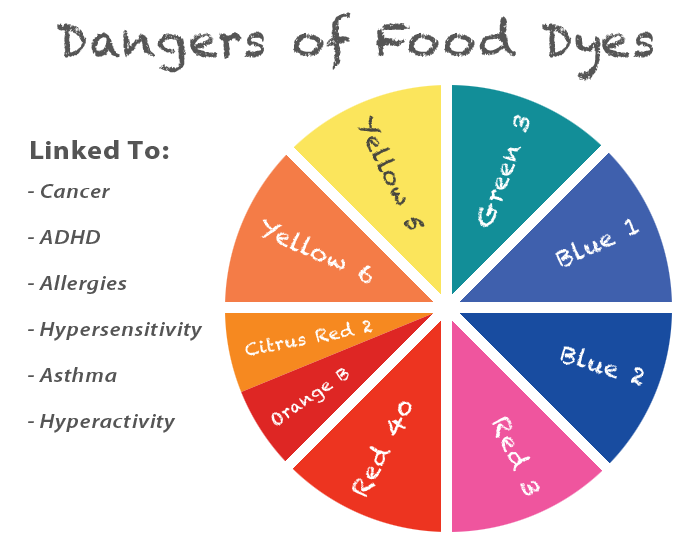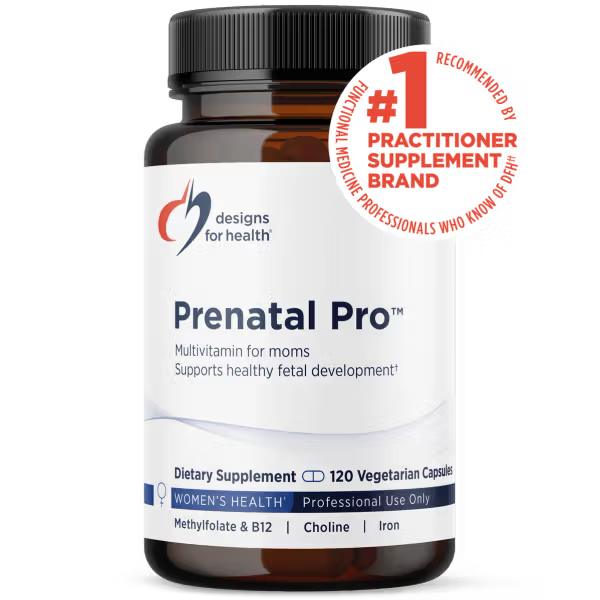Key Summary
- Artificial food dyes such as Red 40, Yellow 5, and Blue 1 are made from petroleum-based chemicals and commonly appear in children’s processed foods.
- Studies suggest that dyes may disrupt neurotransmitters, increase oxidative stress, and worsen behaviors like hyperactivity, impulsivity, irritability, and inattention.
- Sensitive children often improve when dyes are removed and replaced with whole, dye-free, nutrient-dense foods.
- Supporting the nervous system through pediatric chiropractic care can further enhance focus, mood, and overall regulation.
- Parents can reduce exposure by reading labels, choosing natural color alternatives, and focusing on a diet of whole foods.
Why Parents Should Care About Food Dyes
Artificial food dyes are found in many popular kids’ foods—from cereal and yogurt tubes to fruit snacks and drinks. While these bright colors make foods more appealing, growing research shows they can also affect children’s nervous systems and behavior, especially in sensitive kids.
At Pinnacle Chiropractic, we see this connection often: children struggling with hyperactivity, irritability, or emotional ups and downs frequently show improvement when dyes and other artificial additives are removed from their diets.
What Are Food Dyes?
Food dyes are synthetic chemicals made from petroleum that are used to enhance the color and appearance of processed foods.
Common dyes used in the U.S. include:
- Red 40 (Allura Red) – Found in candies, sports drinks, and snack foods
- Yellow 5 (Tartrazine) – Common in cereal, mac and cheese, and baked goods
- Blue 1 (Brilliant Blue) – Found in desserts, drinks, and frosting
While the FDA deems these dyes “safe” within certain limits, new studies and parental reports continue to raise concerns about their effects on behavior and brain function.
How Food Dyes Affect Behavior
Artificial dyes can disrupt brain chemistry and nervous system balance in several ways:
- Neurotransmitter Disruption
Food dyes can interfere with dopamine and serotonin—the brain chemicals responsible for mood, focus, and calm. This may lead to hyperactivity, irritability, or impulsivity. - Increased Inflammation and Oxidative Stress
Dyes may trigger inflammation in the gut and brain, leading to symptoms like poor focus, fatigue, and emotional dysregulation. - Allergic and Sensitivity Reactions
Some children experience behavioral or physical reactions similar to allergies, including mood swings, restlessness, or skin irritation. - Nutrient Depletion
Artificial dyes may deplete minerals like zinc, which plays a key role in brain development and immune balance.
Research from the Journal of Pediatrics and the European Food Safety Authority has linked certain dyes to behavioral changes in children, prompting countries like the U.K. to ban several artificial colorings altogether.
Signs Your Child May Be Sensitive to Food Dyes
Parents often report noticing changes in their child’s behavior shortly after consuming brightly colored snacks.
Look for patterns such as:
- Hyperactivity or restlessness after certain foods
- Sudden mood swings or emotional meltdowns
- Difficulty focusing or following directions
- Trouble falling or staying asleep
- New digestive issues or skin irritation
If these symptoms improve when food dyes are removed, your child may be reacting to synthetic additives.
What Parents Can Do
1. Read Labels Carefully
Look for ingredients like “Red 40,” “Yellow 5,” or “Blue 1.” These are clear signs of artificial coloring. Choose snacks and drinks labeled “dye-free,” “no artificial colors,” or “made with natural coloring.”
2. Choose Whole, Natural Foods
Offer your child colorful foods made by nature—berries, carrots, spinach, and beets. These foods provide antioxidants, vitamins, and minerals that support a healthy brain and immune system.
3. Support the Nervous System
A well-regulated nervous system helps children better adapt to sensory, emotional, and dietary stressors. Gentle, nervous system-based chiropractic care can help rebalance the body, reduce overwhelm, and improve overall behavior and focus.
4. Talk to Your Pediatric or Chiropractic Team
If you suspect dye sensitivity, work with your child’s care provider to create a nutrition and nervous system plan that promotes long-term regulation and calm.
Natural Food Dye Alternatives
Many natural coloring options can make food fun again without synthetic chemicals. Look for:
- Beet juice or pomegranate for red tones
- Turmeric or saffron for yellow tones
- Spirulina or blueberry powder for blue tones
These natural alternatives provide color—and nutrients that help nourish your child’s brain and body.
Why Nervous System Health Matters
At Pinnacle Chiropractic, we know behavior and focus aren’t just “discipline issues.” They’re often signs of nervous system imbalance.
Our doctors use gentle, nervous system-based chiropractic adjustments to help kids move out of fight-or-flight mode and back into a state of calm and regulation—where healing and learning can thrive.
When combined with a clean, additive-free diet, families often see dramatic improvements in mood, focus, sleep, and overall well-being.
Frequently Asked Questions (FAQ)
Do food dyes really cause ADHD?
Food dyes don’t cause ADHD, but research shows they can worsen symptoms of hyperactivity and inattention, especially in children who are already sensitive or have underlying nervous system stress.
Which foods contain the most artificial dyes?
Common culprits include candy, soda, sports drinks, boxed macaroni and cheese, cereal, and colorful snacks like fruit rolls or gummies.
Are natural food dyes safer?
Yes. Natural dyes made from plants and minerals are generally safer and may even offer nutritional benefits such as antioxidants.
What happens when kids stop eating food dyes?
Many parents report improvements in focus, calmness, and sleep within a few weeks of switching to dye-free foods.
Can chiropractic care help kids sensitive to food dyes?
Yes. Nervous system-based chiropractic care helps regulate the body’s stress response, which can improve digestion, sleep, and mood—making kids less reactive overall.
Final Thoughts
Artificial food dyes are colorful but not harmless. By choosing whole foods, reading labels, and supporting your child’s nervous system, you can help reduce behavioral issues and improve their overall health.
At Pinnacle Chiropractic, we’re here to support your family through natural, nervous system-based care that promotes balance from the inside out.
Looking for a Pediatric or Prenatal Chiropractor near you?
Visit www.pdcnearme.com to find a trusted provider in your area.










